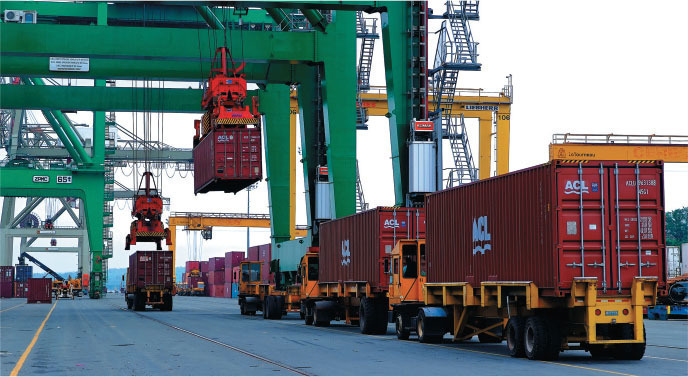Strategic Freight Optimization
Strategic Freight Optimization

STRATEGIC INTEGRATION OF LOGISTICS WITHIN THE PRODUCTION FRAMEWORK
In response to the volatility of international logistics, rising transportation costs, and the scarcity of available freight capacity, the industrial group undertook the establishment of an internal multimodal freight network. The primary objective was to fully integrate logistics into the production cycle - from inbound raw materials and components to the distribution of finished goods, including international shipping corridors. Initial challenges included supply chain instability, reliance on external carriers, route redundancies, and a lack of transparency in intermediary stages. The solution entailed designing an internal logistics architecture encompassing road, rail, maritime, and air transport. Equal emphasis was placed on transport operations and the development of optimal warehousing solutions - both consolidation hubs and intermediate storage facilities - thus improving process control and mitigating bottlenecks between stages.
FLEET RENEWAL, DIGITAL PLATFORMS AND MULTIMODAL CONNECTIVITY
The first phase involved comprehensive renewal of the company’s fleet of freight vehicles across plants and logistics hubs. The new fleet is equipped with advanced telematics, complies with contemporary environmental standards, and is fully integrated into a centralized digital management platform. Subsequently, a network of distribution and consolidation warehouses was established proximate to production sites and along major import-export corridors. Internationally, a robust multimodal system was implemented, consisting of:
- Maritime transport via dedicated export shipping lanes with secured freight slots;
- Air freight capabilities for urgent and time-sensitive cargo;
- Rail logistics connecting regional manufacturing sites;
- Digital dispatch systems offering real-time tracking of load volumes, arrival times, and inter-warehouse transfers.
An integrated Transportation Management System (TMS) links route planning, load management, warehousing, production demand, and shipment statuses. This system is seamlessly connected with the company’s ERP and MES platforms, forming a closed-loop cycle of planning, execution, analysis, and continuous optimization. Advanced routing algorithms and live analytics enable dynamic resource allocation in response to disruptions or peak demand.

BUSINESS IMPACT: EFFICIENCY, CONTROL, AND RESILIENCE
Upon full implementation, three core objectives were realized:
- Reduced dependency on external logistics providers in critical supply chain segments, including international shipping;
- Lowered transportation costs alongside accelerated delivery times, particularly in cross-plant transfers;
- Enhanced operational resilience through predictable, manageable, and digitally monitored logistics processes.
Significant improvements include a 30 - 40% reduction in delivery lead times, marked cost savings in outsourced logistics, and increased order fulfillment accuracy. Furthermore, the logistics infrastructure now serves not only the internal needs but also supports commercial expansion by offering logistics services to external partners and engaging in international cooperative supply chains. Environmental and ESG considerations have also been advanced through:
- Shifting a portion of freight to rail to reduce carbon emissions;
- Deploying vehicles that meet stringent emissions standards;
- Centralizing warehouses to minimize empty runs and optimize routing.
